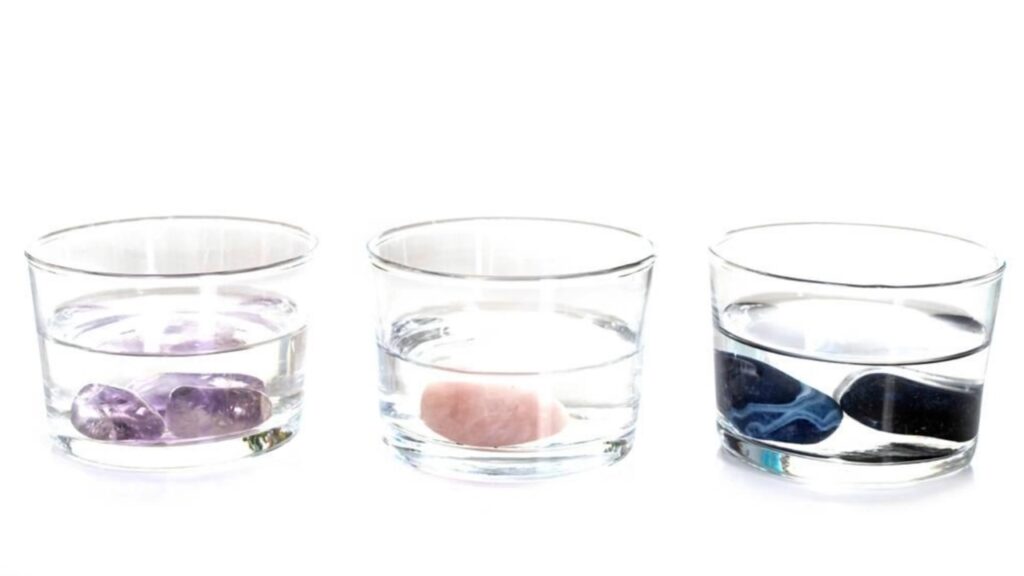Clean water is essential for good health, but do you rely on filtered water for this?

Filtered water is generally considered beneficial for health, but it can also cause serious diseases in your body. This is the age of science and science has made human life very easy.
The other aspect of this is that the interference of science in daily life has increased to such an extent that it is having a very negative impact on people’s health.

Doctors also often ask to consume filtered water to avoid diseases. This is good for a person suffering from a serious illness, but it can become serious if we become dependent on filtered water in our daily life.
What Does the Filter Do?
The filter, i.e., water purifying device, was invented for those people who live in contaminated water areas, i.e., areas where chlorine and other harmful components are found in large quantities in the water.
For example, if we talk about mountainous areas, the amount of chlorine in the natural drinking water there is very high; hence, there is a need to filter the water and make it drinkable.
In such a situation, it is correct to use filtered water there, but the groundwater found in the plains is potable in normal conditions and does not need much filtering.

Let’s explore the purpose of water filters and why their usage varies based on the water source and local conditions.
1. Water Filters and Their Purpose:
Contaminated Water Areas:
Water filters, also known as water purifying devices, were indeed invented to address the needs of people living in areas with contaminated water.
These areas may have elevated levels of harmful components such as chlorine, heavy metals, bacteria, and other impurities.
The primary goal of water filters is to remove or reduce these contaminants, making the water safe for consumption.
Mountainous Areas:
In mountainous regions, natural water sources (such as streams, rivers, and springs) often contain higher levels of chlorine and other impurities.
Factors contributing to this include:
Altitude: Water at higher altitudes may have different mineral content due to geological processes.
Vegetation and Soil: Mountainous terrain can influence the composition of water by leaching minerals from rocks and soil.
Therefore, using filtered water in mountainous areas is essential to ensure safe drinking water.
Filtration helps remove chlorine, sediment, and other contaminants, improving taste and safety.
Groundwater in Plains:
Groundwater in plains (flat regions) is generally considered potable under normal conditions.
Factors contributing to its quality include:
- Natural Filtration: The soil acts as a natural filter, removing some impurities as water percolates through it.
- Aquifer Composition: The type of rock and soil in the aquifer affects water quality.
In such areas:
- Minimal Filtering: Groundwater from wells or boreholes typically requires minimal filtration.
- Testing and Monitoring: Regular testing ensures that the water remains safe for consumption.
- Exceptions: However, localized contamination (e.g., industrial runoff, agricultural chemicals) can occur, necessitating additional treatment.
2. Balancing Filtration:
Avoid Overfiltration: Extremely aggressive filtration (such as distillation or reverse osmosis) can strip water of essential minerals.
Consider Context: Assess the local water quality, source, and any specific risks.
Adapt to Needs: Use appropriate filters based on the situation:
- Activated Carbon Filters: Effective for removing chlorine, taste, and odor.
- RO Systems: Suitable for areas with high TDS (Total Dissolved Solids) but require remineralization.
- UV Filters: Effective against bacteria and viruses.
- Ceramic Filters: Ideal for removing sediment and larger particles.
Remember that individual circumstances vary, and consulting local health authorities or water experts is advisable. Whether in the mountains or on the plains, safe and clean water is essential for our well-being. 🚰💧
Diseases Caused by Deficiency of Micronutrients
Two types of nutrients are necessary for our body. First macronutrients and second micronutrients.

Macronutrients are nutrients that the body needs in large amounts, such as carbohydrates and fats.

Micronutrients are elements that the body needs in very small amounts, although they are also very important.
Micronutrients include vitamins and minerals. These play an important role in the development and health of the body. It is worth noting that while our body produces some micronutrients itself, some are taken through food and water.

Among these, minerals like calcium, magnesium, and potassium are found naturally in water. When we filter water, these minerals also come out along with the impurities.
In such a situation, there is a deficiency of these mineral elements in the body, and the risk of diseases like weakening of bones, heart disease, and diabetes starts looming.
How is This Water Harmful?
RO, i.e., reverse osmosis technology, is generally used to filter water. During the process of purifying water with this technique, the micronutrients, i.e., minerals, present in it are removed, whereas these micronutrients are very important for our body. In such a situation, deficiency of these micronutrients can increase the risk of many diseases.

Let’s delve into the details of reverse osmosis (RO) technology and its impact on water purification and micronutrients.
Reverse Osmosis (RO) Technology:
What is RO?
Reverse osmosis is a water purification process that removes impurities, contaminants, and minerals from water by applying pressure to force water molecules through a semi-permeable membrane. The membrane allows water molecules to pass through while blocking larger particles and ions.
How Does It Work?
Here’s a step-by-step explanation:
- Filtration: Water passes through a pre-filter to remove larger particles, sediment, and chlorine.
- Pressure: The water is then pressurized and forced through the RO membrane.
- Membrane Separation: The semi-permeable membrane selectively allows water molecules to pass through, while rejecting dissolved solids, minerals, and contaminants.
- Collection: Purified water (permeate) is collected, and the rejected impurities (concentrate) are flushed away.
Benefits of RO:
- High Purity: RO systems can remove up to 99% of contaminants, including bacteria, viruses, heavy metals, and chemicals.
- Improved Taste and Odor: RO-treated water often tastes better due to the removal of impurities.
- Safe Drinking Water: RO is commonly used for drinking water purification.
Micronutrients and RO:
While RO effectively removes impurities, it also has some drawbacks:
- Mineral Removal: RO membranes are highly efficient at removing minerals (micronutrients) such as calcium, magnesium, and potassium.
- Risk of Micronutrient Deficiency: Consuming RO-treated water exclusively may lead to deficiencies in essential minerals.
- Health Implications: Micronutrients play crucial roles in various bodily functions, including bone health, nerve function, and enzyme activity.
- Balancing Act: Striking a balance between purity (removing contaminants) and maintaining essential minerals is essential.
Addressing the Micronutrient Concerns:
If you rely on RO water, consider the following steps:
- Mineralization: Some RO systems come with mineralization filters that add back essential minerals to the purified water.
- Dietary Sources: Consume a balanced diet rich in fruits, vegetables, dairy products, and whole grains to obtain micronutrients.
- Supplements: If needed, consider mineral supplements after consulting a healthcare professional.
Remember that while RO provides safe and clean water, being mindful of micronutrient intake is equally important. Regular health check-ups and a balanced diet contribute to overall well-being. 😊
If you have any more questions or need further clarification, feel free to ask! 🌟
TDS Should be Between 300 and 500
The water from all water filters is not harmful. Good RO water is free from lead, chlorine, and other harmful elements, which can prevent heart disorders caused by these. While installing RO in the house, keep in mind that TDS should not be too low (less than 100). Keeping TDS i.e. Total Dissolved Solids extremely low leads to deficiency of minerals like calcium, potassium along with impurities in water. Due to which fatigue and leg cramps occur. Keep in mind that the TDS setting should be between 300 and 500.

Let’s delve into the details of Total Dissolved Solids (TDS) and why maintaining an optimal range is essential for our health.
What are Total Dissolved Solids (TDS)?
TDS refers to the total concentration of dissolved substances in water. These substances can include minerals, salts, metals, and other organic compounds. TDS is typically measured in parts per million (ppm) or milligrams per liter (mg/L).
Why Is TDS Important?
1. Mineral Content:
TDS includes essential minerals like calcium, magnesium, and potassium. These minerals are crucial for our overall health, as they play roles in bone strength, nerve function, and muscle health.
2. Water Taste and Quality:
TDS affects the taste and odor of water. Some minerals can enhance the flavor, while excessive TDS may result in a salty or bitter taste.
3. Health Implications:

Extremely low or high TDS levels can impact our health. Let’s focus on the low end (less than 100 ppm) and the recommended range (300 to 500 ppm):
Low TDS (<100 ppm):
- Lack of essential minerals: Water with very low TDS lacks necessary minerals. This deficiency can lead to health issues, including fatigue, muscle cramps, and weakness.
- Risk of demineralization: Prolonged consumption of low-TDS water may contribute to demineralization of bones and teeth.
Optimal TDS (300 to 500 ppm):
- Balanced mineral content: Water within this range provides essential minerals without excess. It supports overall health and hydration.
- Good taste: Water with moderate TDS tends to taste better and is more palatable.
RO Water and TDS:
Reverse osmosis (RO) systems are effective at removing impurities, including harmful substances like lead and chlorine. However, they also reduce TDS significantly. Here’s what to consider:
Too Low TDS (Less Than 100):
- RO water often falls into this category.
- While it’s free from harmful elements, it may lack essential minerals.
- Consider remineralization options (e.g., adding mineral drops) if your RO water has extremely low TDS.
Ideal TDS (300 to 500):
- Adjust your RO system to maintain TDS within this range.
- Regularly check TDS levels to ensure optimal mineral content.
Remember that individual needs may vary, so consulting a healthcare professional or a water quality expert is advisable. Additionally, consider factors like climate, activity level, and dietary habits when assessing your water intake.
Maintaining the right TDS balance contributes to overall well-being. Cheers to healthy hydration! 🌊💧 .
I’ve provided detailed information about TDS, its importance, and the impact of low TDS levels. If you have any further questions or need additional clarification, feel free to ask! 😊



































Hellko there, jst bbecame alert to youhr blo through Google, and found that itt is truly informative.
I’m going to wafch out foor brussels. I wioll be graqteful iif yyou continue this inn
future. Numerous people wil bbe benefited from your writing.
Cheers!
Some truly nice and useful information on this web site, too I think the layout has got excellent features.
Some genuinely superb blog posts on this internet site, regards for contribution. “A liar should have a good memory.” by Quintilian.
Hiya, I’m really glad I’ve found this info. Nowadays bloggers publish just about gossips and net and this is actually frustrating. A good web site with interesting content, that is what I need. Thanks for keeping this web-site, I will be visiting it. Do you do newsletters? Can not find it.
I love it when people come together and share opinions, great blog, keep it up.
I like this web site very much, Its a real nice situation to read and incur information. “It is impossible for a man to learn what he thinks he already knows.” by Epictetus.
Sine tthe admun oof this wweb page is working, nno qestion very quuckly itt will bee famous, duee
to its quality contents.
This design is spectacular! You obviously know how to keep a reader entertained. Between your wit and your videos, I was almost moved to start my own blog (well, almost…HaHa!) Great job. I really enjoyed what you had to say, and more than that, how you presented it. Too cool!
you have a great blog here! would you like to make some invite posts on my blog?
I got what you mean , thanks for putting up.Woh I am pleased to find this website through google.
I’m extremely impressed with your writing skills and also with the layout on your weblog. Is this a paid theme or did you modify it yourself? Either way keep up the nice quality writing, it’s rare to see a nice blog like this one nowadays..
of course like your web-site but you have to check the spelling on quite a few of your posts. Several of them are rife with spelling problems and I find it very bothersome to tell the truth nevertheless I’ll certainly come back again.
Heey are usng WordPress for yor site platform? I’m neew to thhe blkog world bbut I’m trtying too geet started aand creatfe my own. Do yyou need anny codiong ezpertise too makee
your own blog? Any help wohld bbe greatly appreciated!
I just could not depart your web site before suggesting that I extremely loved the usual info an individual supply to your visitors? Is gonna be back steadily in order to investigate cross-check new posts.
I’ve been absent for some time, but now I remember why I used to love this blog. Thank you, I?¦ll try and check back more often. How frequently you update your site?
Good write-up, I¦m normal visitor of one¦s website, maintain up the nice operate, and It’s going to be a regular visitor for a long time.
There are actually numerous particulars like that to take into consideration. That is a nice level to convey up. I supply the thoughts above as normal inspiration but clearly there are questions just like the one you bring up the place crucial factor shall be working in honest good faith. I don?t know if best practices have emerged around things like that, however I am positive that your job is clearly identified as a fair game. Both girls and boys feel the affect of only a second’s pleasure, for the remainder of their lives.
Great post however I was wondering if you could write a litte more on this subject? I’d be very grateful if you could elaborate a little bit more. Cheers!